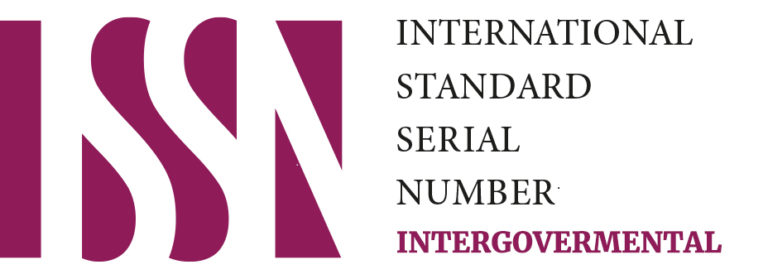ABSTRACT
Climate change is one of the most critical global challenges. Several states and countries have plans to construct 100% clean energy or 100% renewable energy systems by 2050 or sooner. Energy storage technologies are projected to address many challenges related to 100% clean and 100% renewable energy systems. Energy storage policies, incentives, supply chain, and technologies are warranted to address the immediate and far-future needs to ensure a reliable 100% clean energy or 100% renewable system by 2050 or sooner.
INTRODUCTION
Climate change is a critical challenge that is facing all countries.1 Several indicators are accredited to climate change, such as sea-level rise, flooding, temperature rise, longer heat waves, drought, wildfires, and weather randomness. Seasons shift is another climate change-related occurrence that negatively impacts the food supply chain and food production. Limiting greenhouse gas (GHG) emissions is essential to mitigate climate change. The United Nations (UN) continues to be at the forefront of combating climate change. The United Nations Framework Convention on Climate Change (UNFCCC) was the initial step to mitigate climate challenges. This convention is comprised of 197 countries with a common climate goal.2 The Paris Agreement is tasked with bringing member countries together to develop climate change mitigation plans and initiatives. To accomplish those goals, there is a need for appropriate financial investments, technology reinforcements, and an overall framework to guide countries to meet the Paris Agreement’s goals. 3
The electric power industry has been the leading factor from an emission perspective; however, in 2018, GHG emissions resulting from the transportation sector exceeded the emissions from the electric power sector. The transportation sector is the largest contributor to GHG emissions. The transportation sector emissions account for 28%, while the electric power industry accounts for 27%. On a global scale, electric utilities have been addressing emissions from the electric power sector, mainly in the power generation field, and expanded their scope to include the transportation sector.4
From a power generation perspective, coal generation is the most pollutant resource of electric generation. Coal is more pollutant than natural gas. In 2018, power generation from coal in the U.S. accounted for around 28%, while natural gas generation accounted for 34%, and nuclear generation accounted for 20%. Renewable resources, including hydro, solar, wind, and biomass, accounted for around 17%.5
The U.S. FOCUS ON RENEWABLE ENERGY RESOURCES
Several states and countries have plans to construct 100% clean energy or 100% renewable energy systems by 2050 or sooner. Renewable energy resources continue to be connected to the transmission and distribution grids on a global scale. Due to the widespread use of renewable resources, fossil fuel generation, mainly coal generation, continues to shut down. The most widely adopted renewable resources are solar, wind, hydropower, biomass, and geothermal. The renewable resources type varies by geographical location, available incentives, and resource availability. The size of the renewable resources varies whether the interconnection is residential, commercial, or industrial. There are numerous benefits to renewable resources since they do not generate GHGs. In the U.S., several states have clean energy mandates that require a large percentage of renewables to be connected to the grid. Some states require renewables to be physically installed in their territory, while others can purchase clean, renewable power from other states. This can be accomplished via the purchase of renewable energy credits (RECs).
Over the past two decades, renewable prices were the main obstacle for greater adoption. The cost for renewables on a per MWh (megawatt hour) basis continues to decline. Also, several state and federal incentives and policies helped reduce the cost barrier. The other main obstacle for further energy storage adoption is the current utility rate structure, which impeded renewable growth. The utility rate structure for many states does not encourage wider adoption of renewables and increases the overall renewable interconnection cost. Some utilities have grid limits that impede renewable interconnections or result in cost-exhaustive interconnections. The 100% clean energy system and 100% renewable system call for large-scale adoption of renewables such as solar and wind. The critical path towards faster adoption is the required environmental regulations and permits. Solar installation requires a large footprint and offshore wind requires more sophisticated permits for offshore and onshore installations. Standards address project-based uncertainties, risks and reduce the overall cost. Depending on the available solar and wind resources, extensive transmission lines may be required to connect the available remote wind and solar resources to the load centers. Transmission lines are costly and require extensive permits that are time-consuming. Energy storage technologies are projected to address many challenges related to 100% clean energy and 100% renewable energy systems. Energy storage technology-supporting policies will be required.
Several states developed renewable-related policies to support renewable resources in general and specifically address renewable resources cost and other challenges. States have been keen on attracting investors and developers to build solar and wind farms within their states’ boundaries to meet their clean energy and renewable goals. The Renewable Portfolio Standards (RPS) is essential to renewable widespread, where states dictate a certain percentage of electricity to be provided via renewable energy resources. The RPS is a federal mandate to promote solar, biomass, wind, and fossil alternatives. 6
THE ENERGY CHALLENGE
To address climate change goals and reduce GHG emissions from the electric power sector, coal power plants have been shutting down. Several states have banned new gas-related projects. The main difference between the 100% renewable energy system and the 100% clean energy system is nuclear energy. In the 100% renewable system, nuclear power is not included in the generation mix. The 100% renewable system relies heavily on solar and wind for power generation and heavy energy storage usage to compensate for non-sunny and non-windy hours to meet the customers’ load. Baseload generation such as fossil power plants and nuclear plants do not rely on the weather and have a high capacity factor compared to renewable resources.
The 100% clean and 100% renewable systems will rely on energy storage since other fossil fuel generation will not be included in the generation mix. Thus nuclear energy and energy storage will be the predominant baseload generation for the future 100% clean energy system. Energy storage will be the predominant baseload generation for the 100% renewable energy system. As a result, energy storage policies, incentives, and technologies are warranted to address the immediate and far-future needs to ensure a reliable system in 2050, whether it is 100% clean energy or 100% renewable system. Several studies were conducted to evaluate the least cost path for energy transformation. Many of those studies were merely driven by economic calculations and failed to address the proposed plans’ technical impact, which will impact energy storage technologies’ role.
THE ENERGY OUTLOOK
The U.S. relies on diverse power generation resources to meet the population’s current and future energy demand. The energy categories include renewable and non-renewable energy resources. Fossil fuel power generation is considered a primary energy resource that includes natural gas, oil, and coal power plants. 7 Over the past two decades, approximately 75% of emissions resulted from fossil fuels burning. The Department of Energy is responsible for ensuring adequate gas and oil resources and developing the required policies and regulations pertaining to fossil fuels. 8
The U.S. and global solar and wind energy markets are growing exponentially. The Department of Energy realized that wind and solar energy will be significant pillars in the future clean energy and continues to invest in onshore and offshore projects, research and development, technologies, and innovation. Like wind, solar energy adoption on a global scale and in the U.S. has seen remarkable growth. The Department of Energy and its associated laboratories are keen on providing the necessary research to develop more efficient, cost-effective solar panels and wind turbines to support the clean energy future.
By mid-2019, more than two million solar installations were completed in the U.S. The current forecast is to have four million solar installations in the U.S. by 2023. It is expected that the solar industry will double in the next five years and will become the leading power resource in the next decade.9 The solar federal Investment Tax Credit (ITC) is one of the most crucial policies that supported and continues to support solar adoption. The ITC can be utilized for residential and commercial applications. The ITC allowed small residential and small commercial solar advancements and allowed utility-scale solar adoption as well.
The Federal Energy Regulatory Commission (FERC) has the responsibility of organizing energy-related programs and policies. The latest FERC Orders 841/2222 opened the gate for energy storage to compete with other transmission-related proposals and initiatives; thus, it is expected that FERC Orders 841/2222 will enable more solar and wind transmission connected projects when paired with energy storage. 1011
The U.S. is the largest nuclear power producer; around a third of the global nuclear energy generation is generated in the U.S. Nuclear generation represents approximately 20% of the U.S. energy generation mix. The main challenges for building new nuclear plants are the current wholesale electricity market structure and cheaper natural gas prices resulting from shale technology and cheap renewable generation. Currently, 98 nuclear reactors are operating in the U.S.; they are located in 30 states. Nuclear plants are known for their high availability compared to other power generation technologies. The U.S. nuclear fleet has achieved a capacity factor exceeding 90%.121314
GLOBAL ENERGY STUDIES
The increasing level of renewable energy resources interconnected to the transmission and distribution grid presents new challenges. The major drawback of solar and wind generation is their reliance on the weather. The Paris Agreement and other committees suggested the need for a prompt global response to reduce GHGs and introduce low-carbon technologies. The European model connected climate change policies to the market. Several business models and industry strategies were created to support the decarbonization efforts and pressure the power sector to make significant emissions-related changes.15
Several nations in the European Union (EU) have plans to transform to 100% renewable energy by 2050. To plan for a reliable transformation, it is essential to build energy models to evaluate the proposed plans’ reliability and the least cost path. Simulations will cover all the year’s hours and the expected output from solar and wind to determine the necessary energy storage and the least cost energy storage technologies to address long-term needs and short-term frequency services. The anticipated cost per megawatt is the model’s outcome; this vital indicator is essential to develop an economical and efficient transition to a 100% renewable energy system and meet the Paris Agreement’s current goals and targets. 16
Several European countries, including Finland, have 100% renewable or clean energy plans by 2050 or sooner. Several models have been developed to construct a 100% renewable energy framework by evaluating the least-cost scenario based on hourly data and the reliance on energy storage as an enabling tool. The energy model provides a future forecast for the total required energy storage and its storage technology’s expected usage to meet every hour in the year. Several countries and states plan on relying on electric vehicle batteries to meet future demand and complement the grid during times when solar and wind resources are not available or insufficient to meet the total demand. The Finnish model concluded that energy storage would be an integral component of the Finnish 100% renewable system.17
In the U.S., Hawaii and California have very ambitious RPS. Both states have plans to rely heavily on energy storage and develop the appropriate policies to meet the future electric load demand. Energy storage is seen as a proper tool for nations and states with difficult geographical characteristics, such as several islands, as in Hawaii. 18
Several studies have concluded that energy storage’s flexibility is the primary reason for the expected wider adoption in the near and far future. Energy storage is expected to provide the needed grid balance and ensure the overall system’s reliability. Energy storage enables the grid to be balanced during times of excess renewable generation and other times when there is renewable generation deficiency. Since the future 100% renewable energy system relies primarily on solar and wind, which vary by geographical location, there may be long periods when solar irradiance is very poor, or the wind speed is insufficient for generation, thus the need for long-duration energy storage. Studies have indicated the need for short-term and long-term energy storage technologies. Economic models are necessary to evaluate the least cost energy storage mix and provide alternatives to fossil fuel generation to address future needs. 19
More nations continue to adopt 100% clean energy or 100% renewable energy systems. As businesses continue to develop, there will be more reliance on reliable power and a need for energy storage on various levels. Unlike large generation and transmission projects that require a very long time to construct, energy storage technologies are flexible and easier to construct. Energy storage technologies have numerous applications and have high energy density. To meet the expected future transition, energy storage costs will need to decline further. Further research is warranted to enhance the overall performance, lifecycle, power, and energy density and reduce the overall cost. Research is also required to find alternate materials that are safe and abundant.
ENERGY STORAGE TECHNOLOGIES STUDY
A study was conducted to address gaps related to energy storage-related technologies’ role in 100% clean and renewable energy systems in Northeastern U.S. The research questions focused on existing energy storage-related policies, incentives pertaining to 100% clean and renewable systems. This study focused on whether current energy storage technologies are the main obstacles hindering the wider adoption of energy storage. The energy storage supply chain and the use of rare earth materials were also analyzed in this study to determine if they will impede further energy storage adoption. The participants comprised three groups: supporters of 100% clean energy, supporters of 100% renewable energy, and the last group that supports a system comprised of a mix of renewable and non-renewable resources supporters.
Over 70% of the participants worked in North America, and over 80% worked in the Northeast. The largest percentage of the participants were employed in the engineering field. The largest group of the participants chose the third group that supports an energy system comprised of renewable and non-renewable resources compared to the other participants that selected 100% clean or 100% renewable energy systems. Over half of the participants believe that the U.S.’s existing policies and incentives will not meet the climate change goals by 2050 or sooner. Over 60% selected energy storage as the most critical resource to meet the 100% renewable system, followed by 21% that selected nuclear energy. An equal percentage chose hydrogen and clean gas generation.
Regarding the availability of natural resources, 35% of the participants indicated that the existing natural resources are insufficient to meet the global energy storage demand. As shown in other national and international studies and models, 33% of the participants selected cost as the biggest challenge to meet the global energy storage demand. A similar percentage chose policies and incentives, and system inertia and stability as the biggest challenge. 42% chose new technology as the leading challenge, followed by 32% who chose short energy duration as the leading technology challenge. Only 10% selected supply chain as the main challenge. A very high 84% of the participants indicated that the federal government should provide ongoing tax incentives for all sectors (residential, commercial, and industrial) to install energy storage.
Regarding the leading technology challenge associated with energy storage, 42% chose new technology as the leading challenge, followed by 32% who chose short energy duration as the leading technology challenge. Only 10% selected supply chain as the main challenge. Concerning technology-related energy storage challenges, 57% selected cost as the main barrier. 30% chose the lack of supporting policies as the main barrier for further adoption. A very small percentage chose supply chain or recycling as the main barrier. On a global scale, 69% of the participants indicated that existing energy-related policies are insufficient to meet future energy. 24% did not know whether the existing policies are sufficient.
CONCLUSION
Based on the study results, there was no significant difference between the three groups related to energy storage technologies being the main obstacles for wider energy storage adoption. Also, there was no significant difference between the three groups related to existing policies and incentives being sufficient to meet the energy storage goals. There was no significant difference between the three groups related to the energy storage supply chain impeding energy storage adoption.
The impact of the proposed American Energy Innovation Act (AEIA) and President Biden Clean Energy Future is unknown at the moment. The impact of future presidents’ and commissioners’ energy-related policies and incentives, specifically related to energy storage technologies, is unknown. As the study indicated, existing policies and incentives are insufficient to meet the 100% energy goals, and ongoing federal policies and incentives are required to meet the climate change energy goals.
The role of nuclear generation, power to gas, and natural gas generation is not shared equally among policymakers and grid operators. Thus, the difference between various states and nations concerning their choice of 100% renewable, 100% clean energy systems, or a customized generation mix. Existing policies are not sophisticated or complex enough to evaluate the overall grid impact in the next few decades from a customer’s perspective. It is essential to reduce emissions and meet climate change-related goals; however, it is necessary to address customers’ needs and determine the least cost-effective energy mix reliably. Globally adopted policies that address the grid needs, similarities, and differences between systems are essential before reaching a point of no return when several baseload generators retire due to their inability to compete with renewable generation. It is also essential to evaluate the required energy storage technologies to attain 100% clean energy, 100% renewable energy, or a customized energy system.
The existing state and federal policies and incentives in the U.S. need to be evaluated and changed as necessary to meet the 2050 climate goals. To meet the 100% energy goals, the cost of energy storage technologies must be reduced further. Research and development funding is required for the Department of Energy and its associated laboratories and the private sector to address the limitations and 100% energy systems challenges identified in this study.
In February 2021, an arctic air mass impacted parts of the U.S., mainly the central region, resulting in a large amount of snow and ice and a major temperature drop across many states. As a result of the sudden and extreme temperature drop, the electric load demand increased significantly, mainly due to the heating demand. Texas was among the states that were impacted drastically. The major temperature drop and icing conditions negatively impacted the power generation sector, both renewable and fossil. This weather event also impacted natural gas availability, which negatively impacted natural gas power generation and natural gas heating used for the residential, commercial, and industrial sectors. Snow negatively impacted solar generation and halted wind generation as wind farms were not designed to operate in such a climate. Several models and studies addressed the importance of building transmission connections between cities, states, and countries, such as the existing European transmission, enabling more renewables and provided support when the renewable resources were not available. The Electric Reliability Council of Texas (ERCOT) manages the transmission and generation systems. Unlike other Regional Transmission Organizations and Independent System Operators with several transmission interconnections with neighboring states, ERCOT does not have transmission ties with neighboring Regional Transmission Organizations and Independent System Operators. Thus Texas experienced a major blackout as a result. The February 2021 arctic air mass event was an unusual event that resulted in states, including Texas to experience new climate-related disasters that they have not experienced or planned for prior. There are numerous lessons learned from this event, such as the importance of enterprise risk management and planning for black-swan events. The Department of Energy and its associated laboratories are keen on diversifying the generation mix/fleet to ensure energy security and mitigate the climate’s randomness. The study results highlighted the difference between the 100% renewable and clean system and the importance of having baseload generation to mitigate major weather events and renewable intermittency. The study results were aligned with the Texas blackout outcome since they stressed the importance of having baseload generation to mitigate renewable intermittency and the need for policies and incentives to promote energy storage technologies.
REFERENCES
- “The 5 Greatest Challenges to Fighting Climate Change,” MIT Sloan, accessed November 15, 2020, https://mitsloan.mit.edu/ideas-made-to-matter/5-greatest-challenges-to-fighting-climate-change.
- “Climate Change,” n.d., https://www.un.org/en/sections/issues-depth/climate-change/.
- “The Paris Agreement,” n.d., https://unfccc.int/process-and-meetings/the-paris-agreement/the-paris-agreement.
- “What Is the United Nations Framework Convention on Climate Change?,”n.d.,https://unfccc.int/process-and-meetings/the-convention/what-is-the-united-nations-framework-convention-on-climate-change.
- “Sources of Greenhouse Gas Emissions,” n.d., https://www.epa.gov/ghgemissions/sources-greenhouse-gas-emissions.
- “State Renewable Portfolio Standards and Goals,” accessed November 17, 2020,
https://www.ncsl.org/research/energy/renewable-portfolio-standards.aspx.
- “U.S. Energy Facts Explained,” May 7, 2020, https://www.eia.gov/energyexplained/us-energy-facts/.
- “Fossil,” n.d., https://www.energy.gov/science-innovation/energy-sources/fossil.
- “Solar ITC 101: What Is the Solar Investment Tax Credit?,” n.d., https://www.seia.org/sites/default/files/2020-01/SEIA-ITC-Factsheet-2020-Jan_1.pdf.
- “Order No. 841,” February 28, 2018, https://ferc.gov/sites/default/files/2020-06/Order-841.pdf.
- Jeff John, “Enormous Step’ for Energy Storage as Court Upholds FERC Order 841, Opening Wholesale Markets,” July 10, 2020, https://www.greentechmedia.com/articles/read/court-upholds-ferc-order-841-opening-wholesale-markets-to-energy-storage.
- 12. “Nuclear Power in the USA,” September 2020, https://www.world-nuclear.org/information-library/country-profiles/countries-t-z/usa-nuclear-power.aspx.
- 13. “Second License Renewal,” n.d., https://www.nei.org/advocacy/preserve-nuclear-plants/second-license-renewal.
- 14. Guy Burdick, “NuScale Small Modular Reactor Design Becomes First to Get NRC Safety Approval,” September 1, 2020, https://www.utilitydive.com/news/nuscale-small-modular-reactor-design-becomes-first-to-get-nrc-safety-approv/584391/.
- 15. Baron, “Background Paper for the 34th Round Table on Sustainable Development 28-29 September 2016.”.
- Michael Child, Dmitrii Bogdanov, and Christian Breyer, “The Role of Storage Technologies for the Transition to a 100% Renewable Energy System in Europe,” 12th International Renewable Energy Storage Conference, IRES 2018, 13-15 March 2018, Düsseldorf, Germany 155 (November 1, 2018): 44–60, https://doi.org/10.1016/j.egypro.2018.11.067.
- “The Role of Energy Storage Solutions in a 100% Renewable Finnish Energy System | Elsevier Enhanced Reader,” accessed November 16, 2020, https://doi.org/10.1016/j.egypro.2016.10.094.
- Barry D. Solomon and Adam M. Wellstead, “Shooting for Perfection: Hawaii’s Goal of 100% Renewable Energy Use,” Case Studies in the Environment 2, no. 1 (December 31, 2018): 1–9, https://doi.org/10.1525/cse.2018.001073.
- Jeremy J. Hargreaves and Ryan A. Jones, “Long Term Energy Storage in Highly Renewable Systems,” Frontiers in Energy Research 8 (2020): 219, https://doi.org/10.3389/fenrg.2020.00219.
- Catherine Morehouse, “Congress, Texas Should ‘rethink’ ERCOT’s ‘Go It Alone Approach’: FERC Chair Glick,” February 19, 2021, https://www.utilitydive.com/news/congress-texas-should-rethink-ercots-go-it-alone-approach-ferc-chair/595335/.
- Justine Calma, “Texas’ Natural Gas Production Just Froze under Pressure,” February 17, 2021, https://www.theverge.com/2021/2/17/22287130/texas-natural-gas-production-power-outages-frozen.
- Justine Calma, “Texas’ Natural Gas Production Just Froze under Pressure,” February 17, 2021, https://www.theverge.com/2021/2/17/22287130/texas-natural-gas-production-power-outages-frozen.
Publisher information: The Intergovernmental Research and Policy Journal (IRPJ) is a unique interdisciplinary peer-reviewed and open access Journal. It operates under the authority of the only global and treaty-based intergovernmental university in the world (EUCLID), with other intergovernmental organizations in mind. Currently, there are more than 17,000 universities globally, but less than 15 are multilateral institutions, EUCLID, as IRPJ’s sponsor, is the only global and multi-disciplinary UN-registered treaty-based institution.
IRPJ authors can be assured that their research will be widely visible on account of the trusted Internet visibility of its “.int” domain which virtually guarantees first page results on matching keywords (.int domains are only assigned by IANA to vetted treaty-based organizations and are recognized as trusted authorities by search engines). In addition to its “.int” domain, IRPJ is published under an approved ISSN for intergovernmental organizations (“international publisher”) status (also used by United Nations, World Bank, European Space Agency, etc.).
IRPJ offers:
- United Nations Treaty reference on your published article (PDF).
- “Efficiency” driven and “author-focused” workflow
- Operates the very novel author-centric metric of “Journal Efficiency Factor”
- Minimal processing fee with the possibility of waiver
- Dedicated editors to work with graduate and doctoral students
- Continuous publication i.e., publication of articles immediately upon acceptance
- The expected time frame from submission to publication is up to 40 calendar days
- Broad thematic categories
- Every published article will receive a DOI from Crossref and is archived by CLOCKSS.






